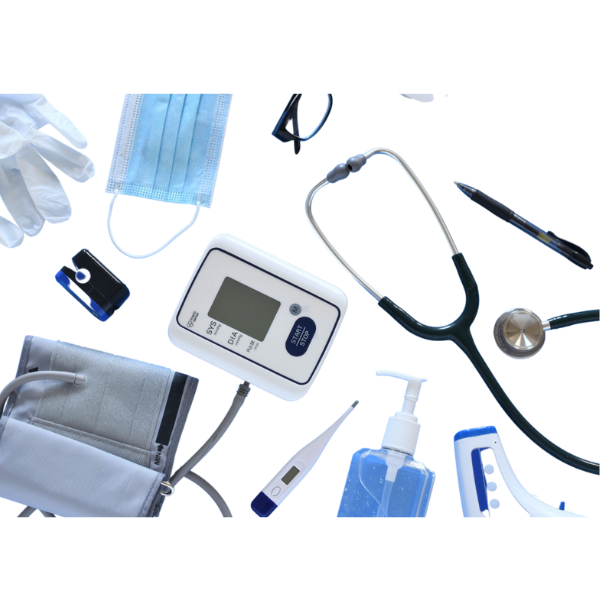-
Bumble and bumble Pret-a-Powder Nourishing Dry Shampoo 150ml ₦68,151.12 QTY: 1
-
SHIN REMEDY 1 DROPS 30ML ₦40,926.00 QTY: 1
Customer matched zone "Lagos Delivery Options"
Sort by:
96369–96384 of 394852 Results
-
Our Diaper Rash Cream is specially formulated to protect and soothe your baby?s delicate skin, providing fast relief from diaper rash and irritation. This cream creates a barrier against moisture and friction, ensuring comfort for your little one.Sku: 1736042747-1673
Diaper Rash Cream | Expires 5/27
₦1,950.00 -
SaleSku: 1737100272-5885
DIAPER RASH CREAM 20 GM
₦2,000.00Original price was: ₦2,000.00.₦1,650.00Current price is: ₦1,650.00.₦2,000.00Original price was: ₦2,000.00.₦1,650.00Current price is: ₦1,650.00. Add to basket Quick View -
-
Soft well fitting and easy to change Diapers. Absorbs fluid rapidly and keeps baby?s skin dry.Clinically proven to prevent diaper rash.Sku: 1713654503-1808
Diapers HUGGIES PANTS S3 60s
₦100.00 -
Soft well fitting and easy to change Diapers. Absorbs fluid rapidly and keeps baby?s skin dry.Clinically proven to prevent diaper rash.Sku: 1713648138-316
Diapers S3 HUGGIES PANTS 36?S
₦100.00 -
Pampers baby dry pants size 5 are used in babies of 12-18 kgs.They have the better fit, and are leakage proof.Sku: 1713652549-1369
Diapers size 5 26 PAMPERS PANTS
₦100.00 -
SaleSku: 1737100265-5884
DIAPERSAFE CREAM
₦3,075.00Original price was: ₦3,075.00.₦2,537.00Current price is: ₦2,537.00.₦3,075.00Original price was: ₦3,075.00.₦2,537.00Current price is: ₦2,537.00. Add to basket Quick View -
SaleA diaphragm gauge is a type of pressure gauge that measures the pressure of a fluid or gas by means of a flexible diaphragm. The diaphragm is typically made of metal, rubber, or a synthetic material, and is designed to deflect in response to changes in pressure. The deflection of the diaphragm is then translated into a pressure reading on a dial or display. Diaphragm gauges are commonly used in industrial and scientific applications where accurate pressure measurement is important. They are particularly useful for measuring low to medium pressures, and are often used in systems where pressure fluctuations are common, such as in hydraulic or pneumatic systems. There are several types of diaphragm gauges, including mechanical, digital, and analog gauges. Mechanical gauges are the most common type and use a physical dial or pointer to indicate pressure. Digital gauges use electronic sensors to measure pressure and display readings on a digital screen, while analog gauges use a strip chart or circular chart to record pressure measurements over time. Diaphragm gauges are available in a variety of sizes and pressure ranges, and can be designed for use in different environments and applications. They are a reliable and accurate way to measure pressure, and are widely used in many different industries, including aerospace, automotive, chemical, and manufacturing.
Diaphragm Gauge
₦40,000.00Original price was: ₦40,000.00.₦35,000.00Current price is: ₦35,000.00.₦40,000.00Original price was: ₦40,000.00.₦35,000.00Current price is: ₦35,000.00. Add to basket Quick View -
SaleDiaphragm pumps made with Aluminium and FPM as the wetted materials are the optimal selection for non-corrosive applications such as backing pumps for wide range and turbomolecular pumps, for regenerating cryopumps, for evacuating or transferring gases and for analysis equipment.Vacuum filtration is one of the most common applications used for sample preparation in chemistry, microbiology, waste water control and other analytical processes. The new ME 1 and ME 1 C diaphragm pumps offer a compact, high perfomance and easy to use solution which is perfect for both single and multiple filtrat 230 V / 50-60 HzThere are no reviews for this product.Write a review Your Name Your ReviewNote: HTML is not translated! Rating Bad Good Captcha Please complete the captcha validation below ContinueSku: 1721366908-7763
Diaphram Vaccum Pump ME 1, One stage 230/ 50-60 HZ
₦142,025.00Original price was: ₦142,025.00.₦12,350.00Current price is: ₦12,350.00.₦142,025.00Original price was: ₦142,025.00.₦12,350.00Current price is: ₦12,350.00. Add to basket Quick View -
SaleDiaplus 5 mgDiaplus 5 mg?is indicated as an adjunct to diet for the control of hyperglycaemia and its associated symptomatology in the treatment of non-insulin-dependent diabetes mellitus (NIDDM type II) when diet modification has not been proved effective on its own. In certain patients who are receiving insulin ... Read moreDiaplus 5 mg?is indicated as an adjunct to diet for the control of hyperglycaemia and its associated symptomatology in the treatment of non-insulin-dependent diabetes mellitus (NIDDM type II) when diet modification has not been proved effective on its own. In certain patients who are receiving insulin, the concurrent use of Diaplus 5 mg would allow a reduction in the daily dose of insulin.Use of Diaplus 5 mg must be viewed by both the physician and patient as a treatment in addition to diet and not as a substitute for diet or as a convenient mechanism for avoiding dietary restraint. Furthermore, short term administration may be required if diet control alone results in transient control of blood glucose level. During maintenance, if satisfactory lowering of blood glucose is no longer achieved, use of Diaplus 5 mg should be discontinued.Theropeutic ClassSulfonylureasPharmacologyDiaplus 5 mg lowers blood glucose by stimulating the release of insulin from the pancreas, an effect dependent upon functioning beta cells. The extrapancreatic effects of Diaplus 5 mg are increase in insulin sensitivity and decrease in hepatic glucose production.Dosage & Administration of Diaplus 5 mgLike any other oral hypoglycaemic agent, dosage of Diaplus 5 mg is not fixed and may be adjusted through periodic monitoring of blood glucose level. Short term administration of Diaplus 5 mg may be sufficient during periods of transient loss of control of blood glucose in patients, usually controlled well on diet.In general, Diaplus 5 mg should be given approximately 30 minutes before a meal to achieve the maximum reduction in postprandial hyperglycaemia. Initial dose: The recommended starting dose is 5 mg, given before breakfast. Geriatric patients or those with liver disease may be started on 2.5 mg. Dosage adjustments: Dosage adjustment may be done at intervals of several days by an increment of 2.5-5 mg, as determined by blood glucose response. If response to a single dose is not satisfactory, dividing that dose might prove effective. The maximum recommended once daily dose is 15 mg. Doses above 15 mg should ordinarily be divided and given before meals of adequate calorie content. The maximum recommended total daily dose is 40 mg. Maintenance: Some patients may be effectively controlled on a once daily regimen, while others show better response with divided dosing. Total daily dose above 30 mg have been safely given on bid basis to long term patients. Patients can usually be stabilized on a dosage ranging from 2.5 to 30 mg daily. In elderly, debilitated or malnourished patients, and patients with impaired renal or hepatic function:?The initial and maintenance dosing should be conservative to avoid hypoglycaemic reactions.Patients receiving insulin: Many stable non-insulin-dependent diabetic patients receiving Insulin may be safely placed on Diaplus 5 mg if the physician decides to do so.Patients receiving other oral hypoglycaemic agents: As with other sulphonylurea, no transition period is necessary while transferring patients to Diaplus 5 mg. Patients should be observed carefully for any possible hypoglycaemic effect due to overlapping of drug effects.Dosage of Diaplus 5 mgLike any other oral hypoglycaemic agent, dosage of Diaplus 5 mg is not fixed and may be adjusted through periodic monitoring of blood glucose level. Short term administration of Diaplus 5 mg may be sufficient during periods of transient loss of control of blood glucose in patients, usually controlled well on diet.In general, Diaplus 5 mg should be given approximately 30 minutes before a meal to achieve the maximum reduction in postprandial hyperglycaemia. Initial dose: The recommended starting dose is 5 mg, given before breakfast. Geriatric patients or those with liver disease may be started on 2.5 mg. Dosage adjustments: Dosage adjustment may be done at intervals of several days by an increment of 2.5-5 mg, as determined by blood glucose response. If response to a single dose is not satisfactory, dividing that dose might prove effective. The maximum recommended once daily dose is 15 mg. Doses above 15 mg should ordinarily be divided and given before meals of adequate calorie content. The maximum recommended total daily dose is 40 mg. Maintenance: Some patients may be effectively controlled on a once daily regimen, while others show better response with divided dosing. Total daily dose above 30 mg have been safely given on bid basis to long term patients. Patients can usually be stabilized on a dosage ranging from 2.5 to 30 mg daily. In elderly, debilitated or malnourished patients, and patients with impaired renal or hepatic function:?The initial and maintenance dosing should be conservative to avoid hypoglycaemic reactions.Patients receiving insulin: Many stable non-insulin-dependent diabetic patients receiving Insulin may be safely placed on Diaplus 5 mg if the physician decides to do so.Patients receiving other oral hypoglycaemic agents: As with other sulphonylurea, no transition period is necessary while transferring patients to Diaplus 5 mg. Patients should be observed carefully for any possible hypoglycaemic effect due to overlapping of drug effects.Pediatric Use: Safety and effectiveness in children have not been established.Interaction of Diaplus 5 mgThe hypoglycaemic action of sulphonylurea may be potentiated by certain drugs including non-steroidal anti inflammatory agents and other drugs that are highly protein bound e.g., Salicylates, Sulphonamides, Chloramphenicol, Probenecid, Coumarins, Monoamine Oxidase Inhibitors, and ? adrenergic blocking agents. When such drugs are administered to a patient receiving Diaplus 5 mg, the patients should be observed closely for hypoglycaemia. When such drugs are withdrawn from a patient receiving Diaplus 5 mg, the patient should be observed closely for loss of control on blood glucose.Certain drugs tend to produce hyperglycaemia and may lead to loss of control on blood glucose. These drugs include the thiazides and other diuretics, corticosteroids, phenothiazines, thyroid products, oestrogens, oral contraceptives, Phenytoin, nicotinic acid, sympathomimetics, calcium channel blocking drugs and Isoniazid. When such drugs are administered to or withdrawn from a patient receiving Diaplus 5 mg, the patient should be closely observed for loss of control on blood glucose. Diabetic control may be altered also in patients treated with cyclophosphamide.ContraindicationsDiaplus 5 mg is contraindicated in the following conditions : Patients who are hypersensitive to Diaplus 5 mg or any component of the product Juvenile onset diabetes Severe or unstable ?brittle? diabetes Diabetes complicated by ketosis and acidosis, major surgery, severe sepsis or severe trauma Severe renal, hepatic or thyroid impairment, co-existent renal and hepatic disease Side Effects of Diaplus 5 mgThe majority of side effects have been dose related, transient, and responded to dose reduction or withdrawal of the medication.Gastrointestinal: Gastrointestinal complaints were reported with the following approximate incidences like nausea, diarrhoea, constipation and gastralgia. They appear to be dose related and usually disappear on division or reduction of dosage. Cholestatic jaundice may occur rarely with these kind of drugs and Diaplus 5 mg should be discontinued if this occurs.Dermatological: Allergic skin reactions including erythema, morbilliform or maculopapular eruption, urticaria, pruritus and eczema have been reported. They frequently disappear with continued therapy. However, if they persist, the drug should be discontinued.Haematologic: Leucopenia, agranulocytosis, thrombocytopenia, haemolytic anaemia, aplastic anaemia and pancytopenia have been reported with sulphonylureas.Metabolic: Hepatic porphyria and disulphiram like reactions have been reported with sulphonylurea.Endocrine reactions: Cases of hyponatraemia and the syndrome of inappropriate antidiuretic hormone (SIADH) secretion have been reported with this and other sulphonylureas.Miscellaneous: Dizziness, drowsiness and headache have been reported in patients treated with Diaplus 5 mg. They are usually transient and seldom require discontinuation of therapy.Pregnancy & LactationPregnancy: Diaplus 5 mg should be used during pregnancy only if the potential benefit justifies the potential risk to the foetus. Prolonged severe hypoglycaemia (4-10 days) has been reported in neonates born to mothers who were receiving sulphonylurea (e.g., Diaplus 5 mg) at the time of delivery. So, if Diaplus 5 mg is used during pregnancy, it should be discontinued at least one month before the expected delivery date.Lactation: Although it is not known whether Diaplus 5 mg is excreted in human milk, some sulphonylurea drugs are known to be so. Breast feeding is not therefore recommended while taking this medication.Precautions & WarningsHypoglycaemia: All sulphonylurea drugs are capable of producing severe hypoglycaemia. Proper patient selection, dosage and instructions are important to avoid hypoglycaemic episodes. Renal or hepatic insufficiency may cause elevated blood levels of Diaplus 5 mg and the latter may also diminis gluconeogenic capacity, both of which increase the risk of serious hypoglycaemic reactions. Elderly, debilitated or malnourished patients and those with adrenal or pituitary insufficiency are particularly susceptible to the hypoglycaemic actions of glucose lowering drugs. Patients should be instructed to take their meals regularly and not to exercise excessively without additional calorie intake.Renal and hepatic disease: The metabolism and excretion of Diaplus 5 mg may be slowed in patients with impaired renal and/or hepatic function. These patients may suffer from prolonged hypoglycaemia and appropriate measures should be instituted.Loss of control on blood glucose: When a patient stabilized on any antidiabetic regimen is exposed to stress such as fever, trauma, infection or surgery, a loss of control on blood glucose may occur. At that time it may be necessary to discontinue Diaplus 5 mg and administer Insulin. The effectiveness of any oral hypoglycaemic drug including Diaplus 5 mg, in lowering blood glucose to a desired level, decreases in many patients over a period of time, which may be due to secondary failure, i.e., progression of the severity of the diabetes or diminished responsiveness to the drug.Overdose Effects of Diaplus 5 mgThere is no well-documented experience with Diaplus 5 mg tablets overdosage in humans.Storage ConditionsThe tablets should be protected from moisture and humidity and stored at room temperature (below 30? C).Use In Special PopulationsPediatric Use: Safety and effectiveness in children have not been established.Geriatric Use: There were no overall differences in effectiveness or safety between younger and older patients.Renal Impairment: Severe: Contraindicated.Hepatic Impairment: Severe: Contraindicated.Drug ClassesSulfonylureasMode Of ActionDiaplus 5 mg lowers blood glucose by stimulating the release of insulin from the pancreas, an effect dependent upon functioning beta cells. The extrapancreatic effects of Diaplus 5 mg are increase in insulin sensitivity and decrease in hepatic glucose production.PregnancyPregnancy: Diaplus 5 mg should be used during pregnancy only if the potential benefit justifies the potential risk to the foetus. Prolonged severe hypoglycaemia (4-10 days) has been reported in neonates born to mothers who were receiving sulphonylurea (e.g., Diaplus 5 mg) at the time of delivery. So, if Diaplus 5 mg is used during pregnancy, it should be discontinued at least one month before the expected delivery date.Lactation: Although it is not known whether Diaplus 5 mg is excreted in human milk, some sulphonylurea drugs are known to be so. Breast feeding is not therefore recommended while taking this medication.Sku: 1736097963-1656
Diaplus5 mg
₦110.00Original price was: ₦110.00.₦101.20Current price is: ₦101.20. -
Prevents diaper rash and creates a protective barrier against irritation and discomfort. Unique formula contains Natural Protease Enzyme Inhibitor that inhibits Protease Enzymes in feces Dexpanthenol (pro-vitamin B5) promotes skin restoration and helps the skin to retain its moisture levels Clinically proven and hypoallergenic Made in the NetherlandsSku: 1728904316-4
Diapo Care ? Barrier Cream for Diaper Rash (40g)
₦0.00 -
-
-
SaleSku: 1737100259-5883
DIAPRIDE 1MG TAB 30`S
₦3,024.00Original price was: ₦3,024.00.₦2,491.75Current price is: ₦2,491.75.₦3,024.00Original price was: ₦3,024.00.₦2,491.75Current price is: ₦2,491.75. Add to basket Quick View -
SaleSku: 1737100254-5882
DIAPRIDE 1MG TABLET 30?S
₦3,024.00Original price was: ₦3,024.00.₦2,494.75Current price is: ₦2,494.75.₦3,024.00Original price was: ₦3,024.00.₦2,494.75Current price is: ₦2,494.75. Add to basket Quick View

















